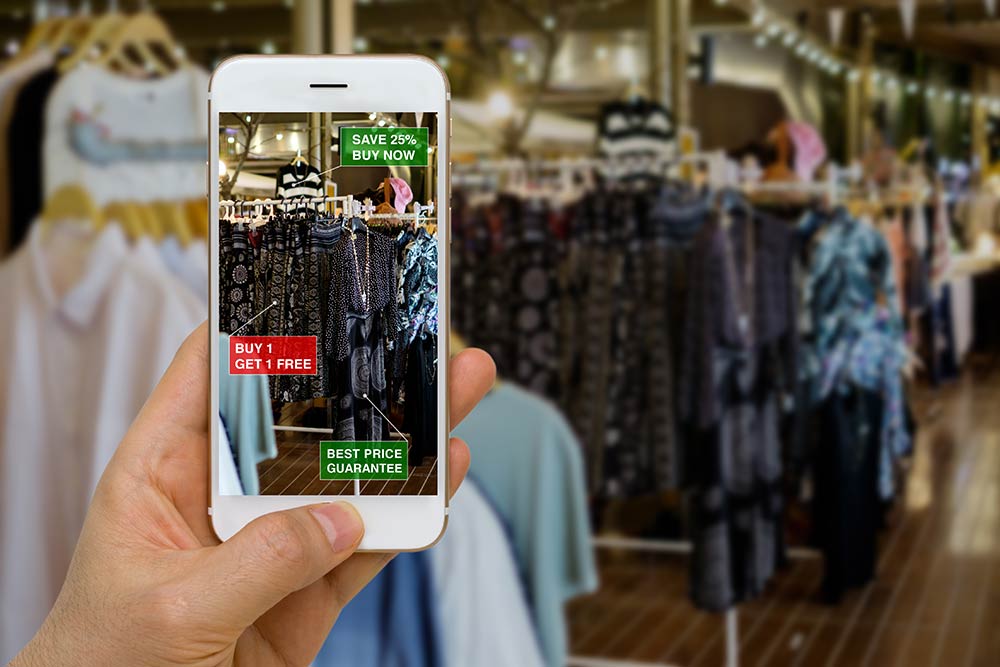How is mobile POS changing the face of customer service?

It’s no secret the retail landscape is rapidly changing. Where once shopping was all about product availability and face-to-face customer service, now the tech savvy consumer has the ability to shop anywhere, anytime with a world of information at their fingertips.
For real-world retailers, successfully riding this evolving wave is about providing a customer experience second to none while harnessing the power of a physical shop front. At the heart of this experience is the mobile Point of Sale. Offering information, payment convenience and storing a wealth of data, it is the integral link for providing complete customer engagement.
Here’s how mobile POS is changing the face of customer service.
Real-time retail
At the centre of customer engagement is real-time retail, utilising the unique environment that only a shop front can provide. Not only can customers touch and feel the wares in bricks and mortar stores but they can buy them right now to use immediately.
The key to leveraging this is making the purchasing process as smooth as possible, and this is the job mobile POS was born to do. By its nature mobile POS allows the sales associate to take a payment anywhere at any time via an iPad, tablet or smartphone.
“Mobile POS enables associates to complete a customer’s purchase on the sales floor at the moment the buying decision is made. It frees associates from the checkout desk to enable more personal interactions and simplifies the experience for the customer by eliminating the need to wait in line,” Boston Retail Partners explain in their comprehensive “POS/Consumer Engagement” study.
Real time analytics
But real-time retail isn’t just about payments; it’s about the real-time analytics that enable a purchase.
A major asset of mobile POS is its ability to capture and provide information including current inventory information, a consumer’s shopping history, popular product sales, and stock loss.
This real-time information allows the shop front to better hone its procedures. It furnishes the retailer with a clear picture of what’s happening, where and when to enable adequate staff and product management.
“Real-time retail incorporates more than just customer transactions; it also encompasses loss prevention, merchandising, workforce management and external factors that may have an impact on store performance and the customer experience,” Boston Retail Partners note.
Staff information
New age retail staff are no longer just smiling faces behind a counter offering advice on what’s in-store. Instead they are also expected to come to the consumer armed with accurate and relevant information that enables consumers to make an educated decision.
Sales associates need to know what’s trending, what’s available elsewhere and what’s currently in stock, and mobile POS fulfils this role.
By providing staff with access to mobile devices like tablets, the store has new powers to engage the consumer with information, product selection and service. Need to know if something’s available in another colour, check the POS. Need to see reviews on social media? Conduct a quick search of the internet courtesy of the mobile device at hand. Armed with all this information the consumer can make the decision to buy and the sales associate can finalise that purchase right there and then.
As a result Capterra notes, 62 per cent of retail workers say mPOS has made their jobs easier, while 28 per cent say it’s increased the number of products a customer buys.
This trend goes even further when combined mobile POS extensions like information kiosks and smart fitting rooms. In these instances existing technology like RFID tags enable associates and even consumers to scan their items and find out what’s in stock, what can be readily brought in or delivered, what it would look like in an alternate colour, and how it’s reviewed by other purchasers.
Already mobile POS is being interlinked with this technology allowing consumers to learn more, engage more and then complete their purchase straight away.
Know your customer
Critically mobile POS has a wealth of information at its fingertips about loyal customers. Scan a loyalty card or enter a name and depending on the software, mobile POS can reveal a consumer’s purchase history, preferred payment methods, and send a receipt or marketing email directly to their provided email address.
Whether they’re behind the counter or on the shop floor, the sales associate has this information readily available, enabling them to suggest further purchases that cater to a unique shopper’s tastes.
Meanwhile, it allows retailers to engage the customer in the future as well as that moment, opening up a wealth of opportunity when it comes to marketing, promotions, loyalty rewards and more.
The final word
Forbes notes that over the next four years: “87% of retailers will deploy mobile Point of Sale”.
Meanwhile Global Market Insights further explains that in retail the mobile POS market will grow at a 17.8 per cent compounded from 2016 to 2023 creating “value for retailers” while “leading to more converged and integrated store solutions”.
Part of the reason for the growth will be convenience and affordability, but much of it will also be due to the way in which mobile POS caters to the all-important consumer experience of a store.